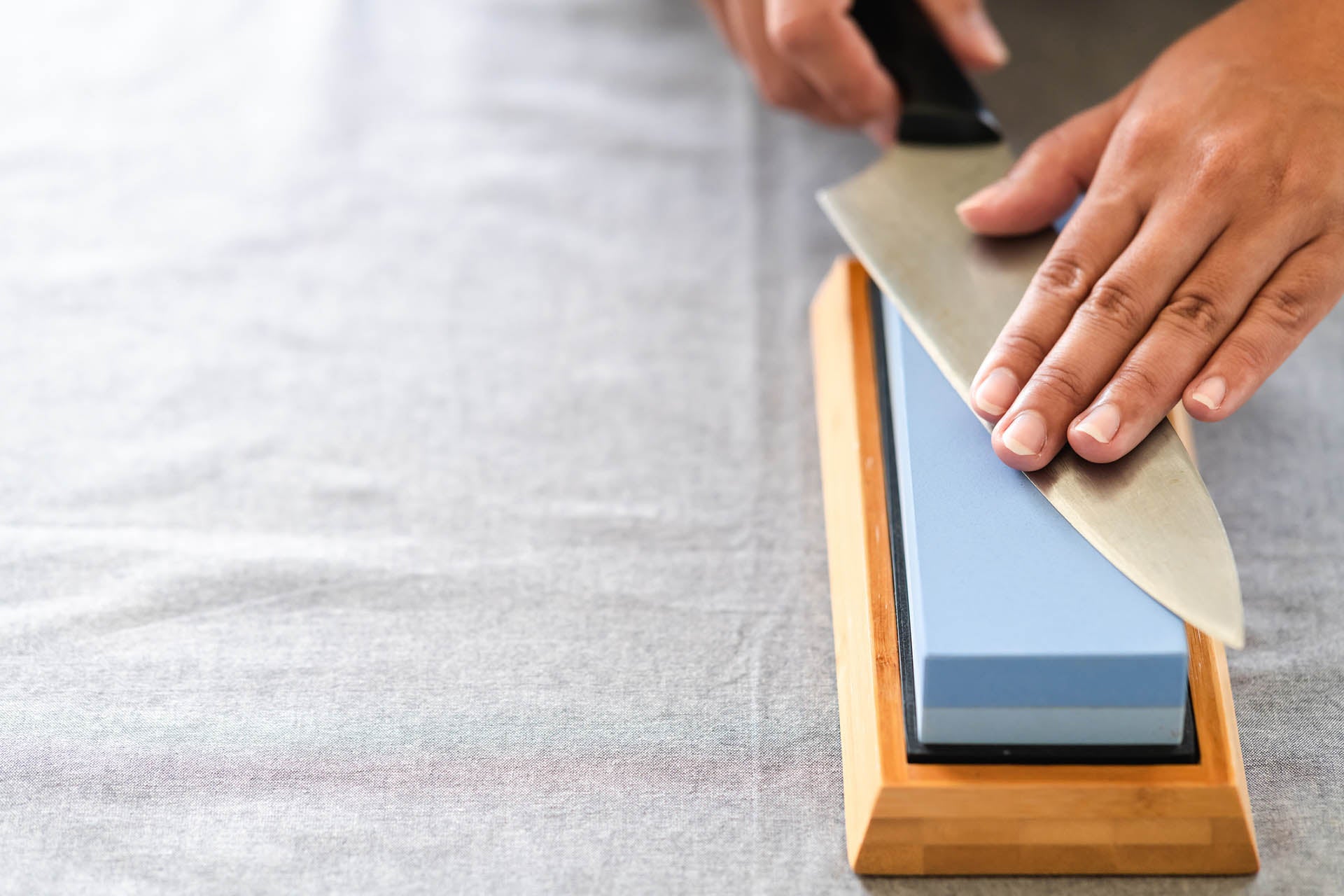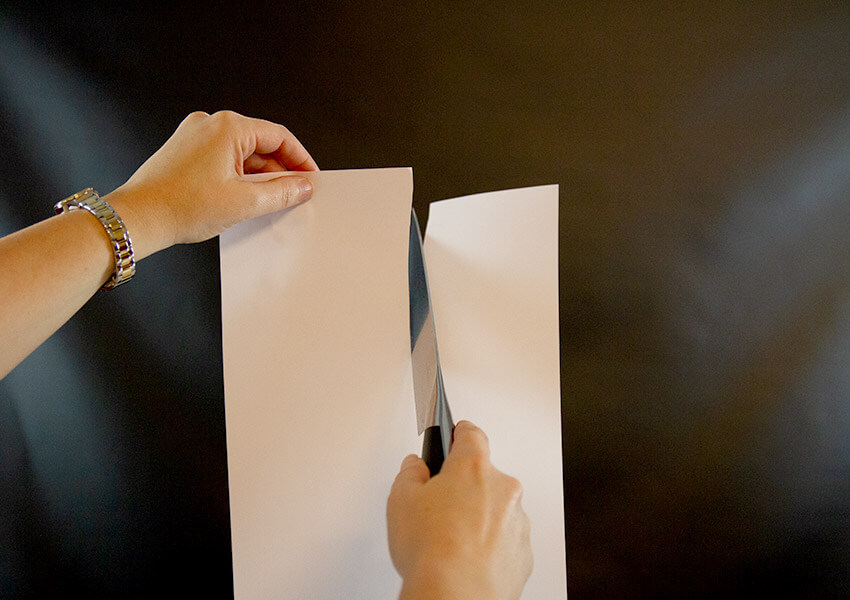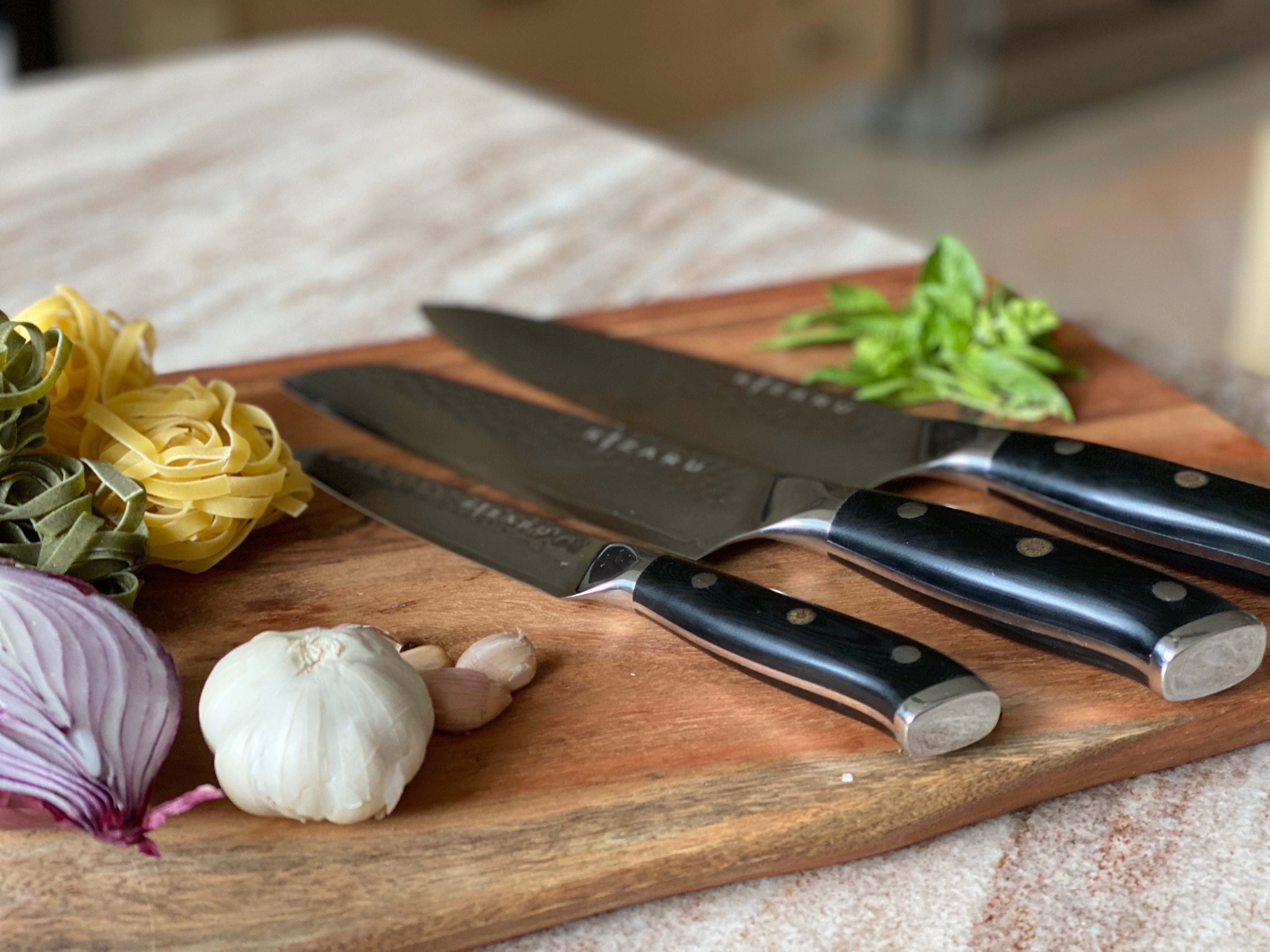Article: Best 5 Tips To Sharpen Your Knife | From A Master Chef

Best 5 Tips To Sharpen Your Knife | From A Master Chef
Have you ever wondered why your knives feel dull and lack the sharpness you so desperately want? It could be that they're simply cheap knives, but it's more likely that you're just not using the right technique or taking the proper steps to sharpen them—if you're sharpening them at all.
:max_bytes(150000):strip_icc()/__opt__aboutcom__coeus__resources__content_migration__serious_eats__seriouseats.com__images__2016__05__20160516-knife-crimes-1-9e8732a4bc94405eae14deb41481506f.jpg)
Here are some tips and tricks to boost your knives' performance:
1. Sharpness Test
Let's start with the basics. How do you even know if your knife is dull in the first place?
Some people are so used to using dull knives that they don't even realize they need sharpening. To ensure you're not putting more effort than needed into your cutting tasks, we must run a paper test. This test will tell us how dull your knife is and, more importantly, how much sharpening it needs.
What we're looking for is a razor sharp edge that will split whatever it meets—in this case, the sheet of paper.

To perform this test, hold a sheet of paper by one of its corners with your non-dominant hand, and the knife with your dominant hand. Holding both of them this way, press down the knife against an edge of the paper in a slicing motion. The resulting cut will indicate the knife's condition:
- If the knife cuts through smoothly and easily, barely making any sound, the knife is sharp.
- If the knife requires a sawing movement to go through, then it needs slight sharpening.
- If the knife doesn't cut the paper at all, it needs thorough sharpening.

2. Don't overcomplicate the sharpening process
It can be tempting to overcomplicate the sharpening process—after all, we all care deeply about our knives and don't want to harm them.
However, it's almost impossible to do irreparable damage to your knife when sharpening them with a whetstone (whetstones are highly recommended). The most damage you can do is angling the knife too flat and scratching its side, which would affect its aesthetic but not its ability to perform.
The correct sharpening technique consists of:
- (1) holding your knife horizontally with its edge away from you,
- (2) angling your knife 15° to 20° against the whetstone, and
- (3) making steady strokes across the whetstone and away from you, as you ensure that the weight is evenly distributed throughout the motion

3. If you've never sharpened a knife before, start with a paring knife
It's easier to handle a shorter and lighter knife, such as a pairing knife, than larger knives. That's why it's recommended to practice with a pairing knife before moving on to bigger game. With that being said, don't get daunted—it's really not that difficult to sharpen knives but it's always good to play it safe when starting out.

4. Apply extra pressure when sharpening
The most common mistake people make when sharpening their knives is not putting enough pressure. It's normal to want to be careful and take care of each piece, so it's not a surprise this happens so often.
The takeaway is simple—whatever pressure you think is suitable, add a little extra. Your knives will thank you later.
For a very dull knife, apply around 4-6 pounds of force. For a not-so-dull knife, apply 8 pounds of force. You can use a kitchen scale to get an idea of how much pressure you're applying, and adjust accordingly.

5. Use The Right Grit Level
Make sure that you're using a whetstone whose grit level is suitable for your knife's condition.
For very dull knives it's better to use lower grit levels (around 1000), and for knives that are already sharp but need an extra edge it's better to use higher grit levels (around 6000). Of course, it's a spectrum and there are many grit levels in between.
The grit level determines the coarseness of the stone. Whetstones with lower grit levels are more course, so they will shed off more metal from the blade to quickly regain the edge. If the grit level is low, then the whetstone will act more like a polisher that will slowly give shape to the knife's edge.

What Whetstone Should You Have?
If you're looking for a whetstone to sharpen your knives, we recommend the Toishi Whetstone Sharpener. It's a dual-sided whetstone that features two grit levels in one, so that there's more versatility when it comes to taking care of your knives.
We may be a bit biased but, objectively, it's a high-quality whetstone that gets the job done.


